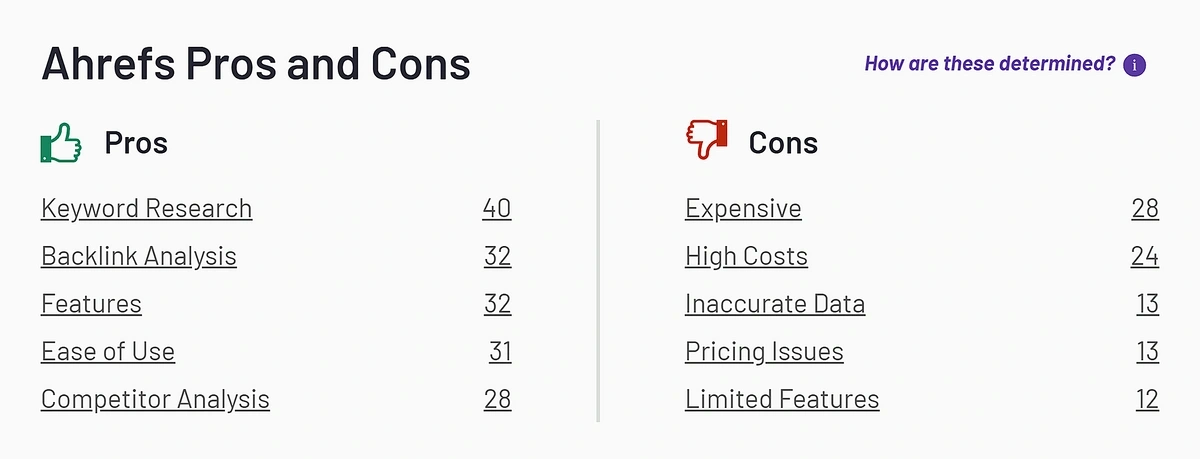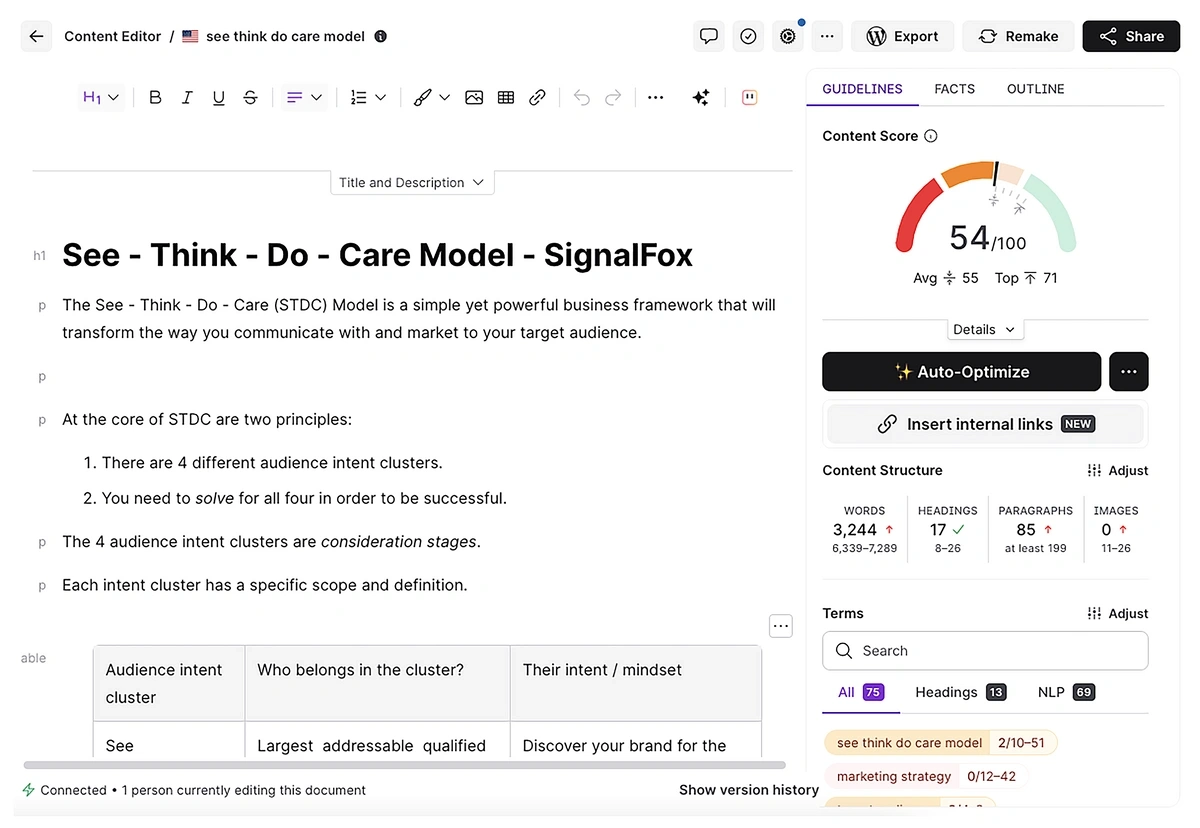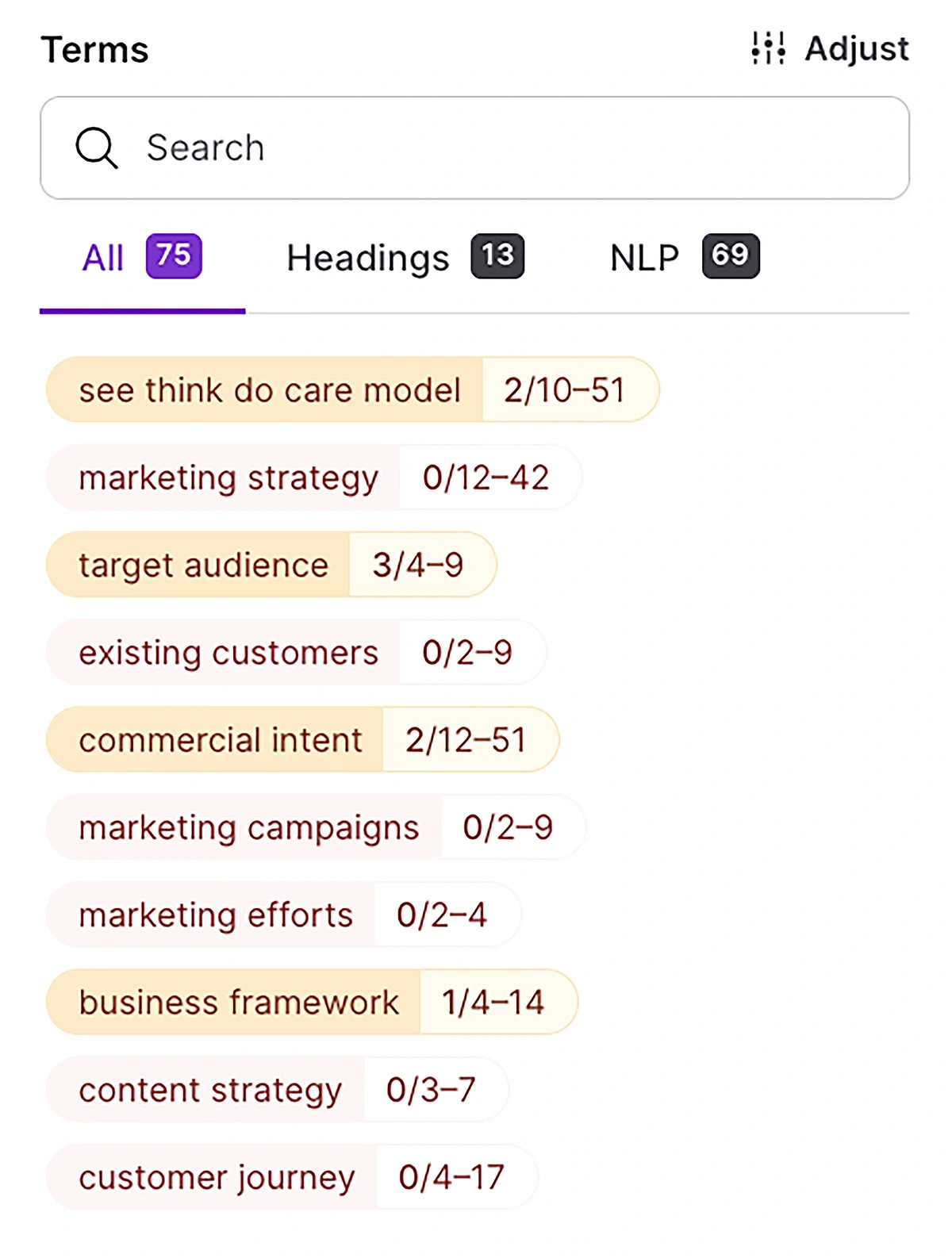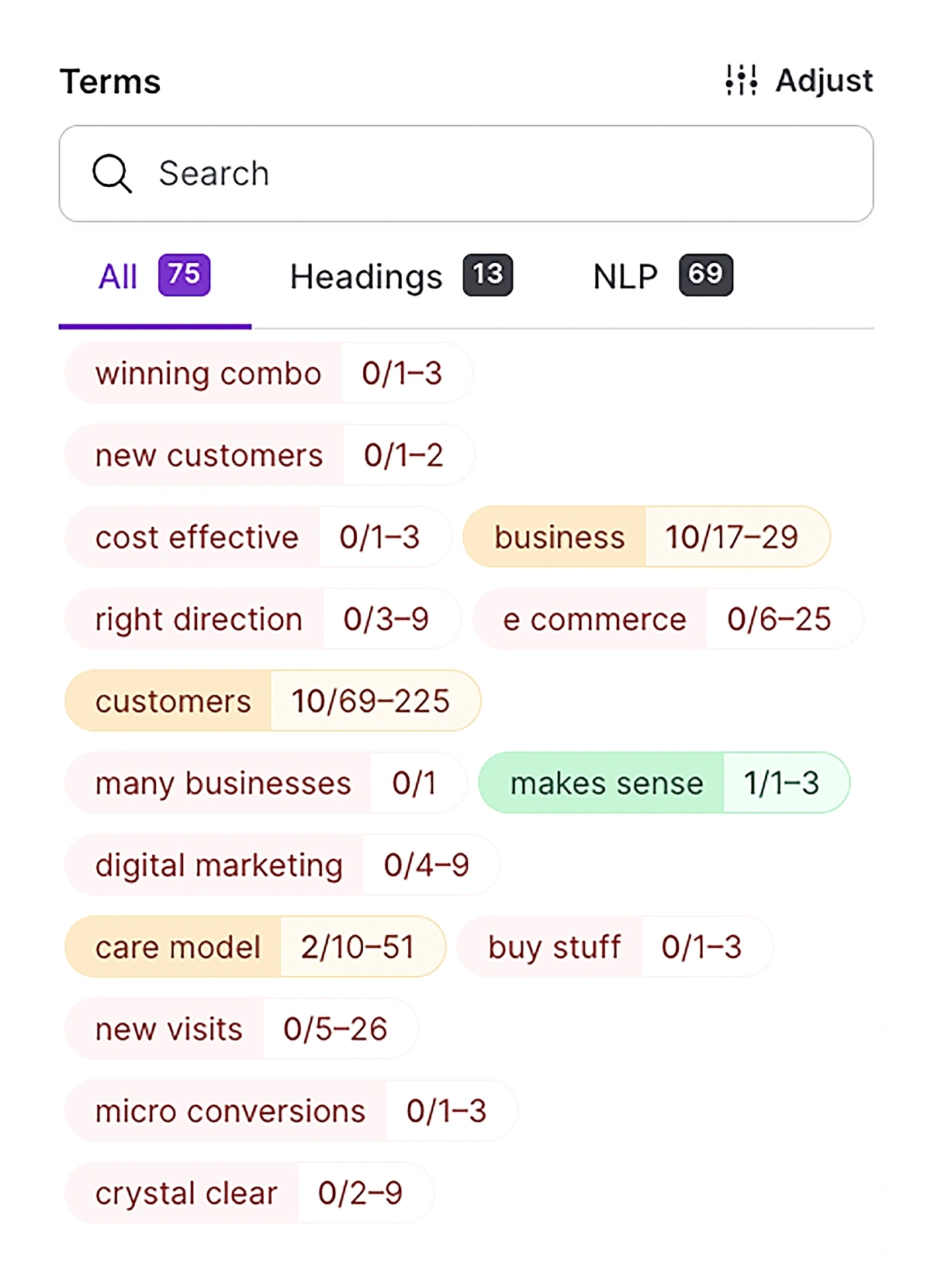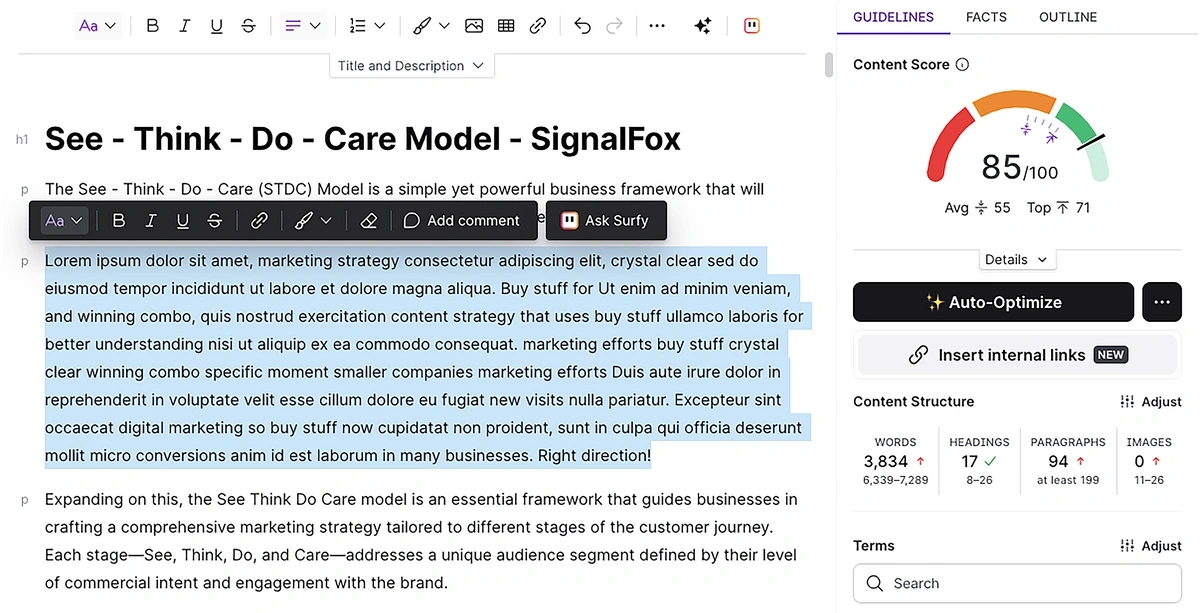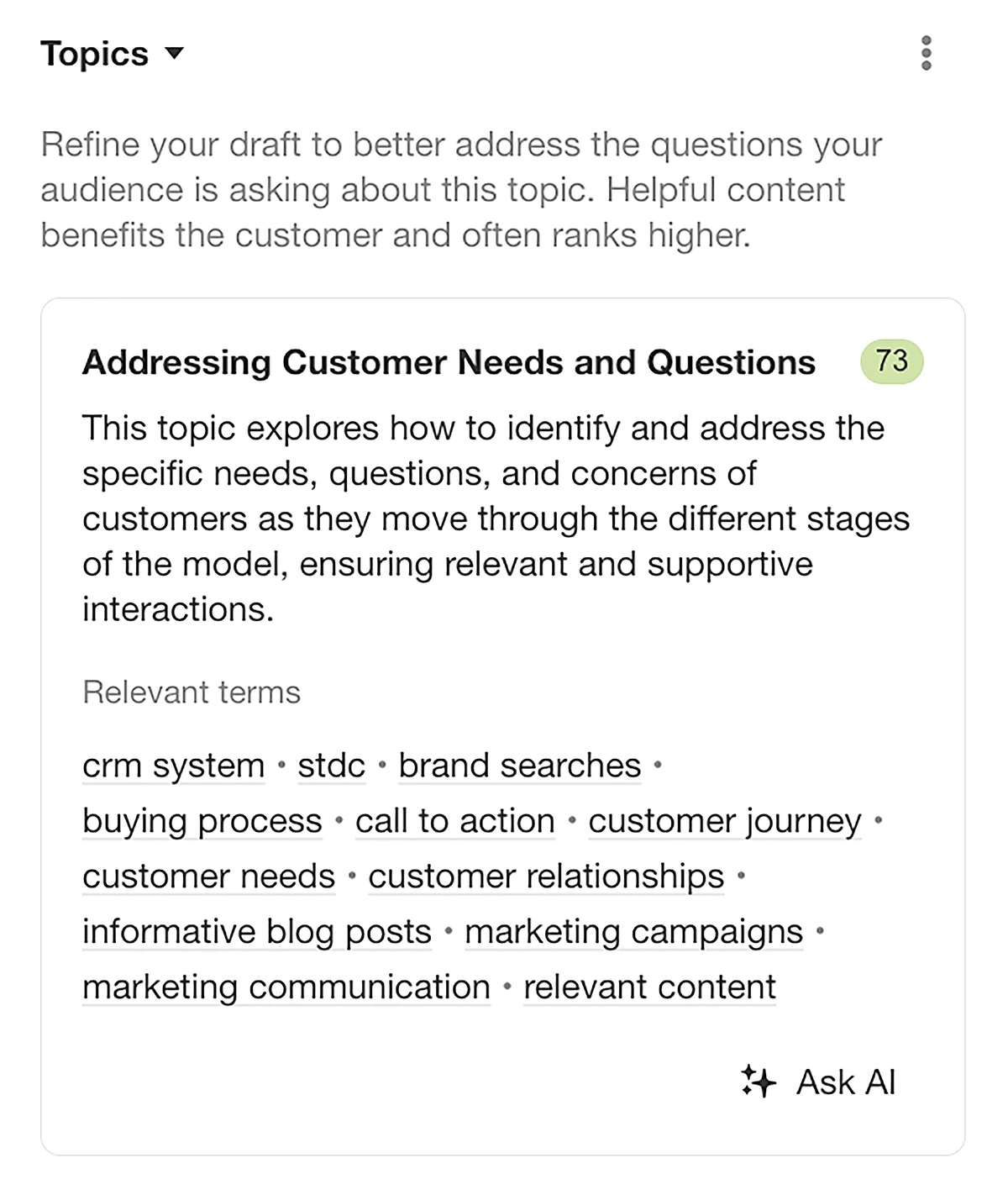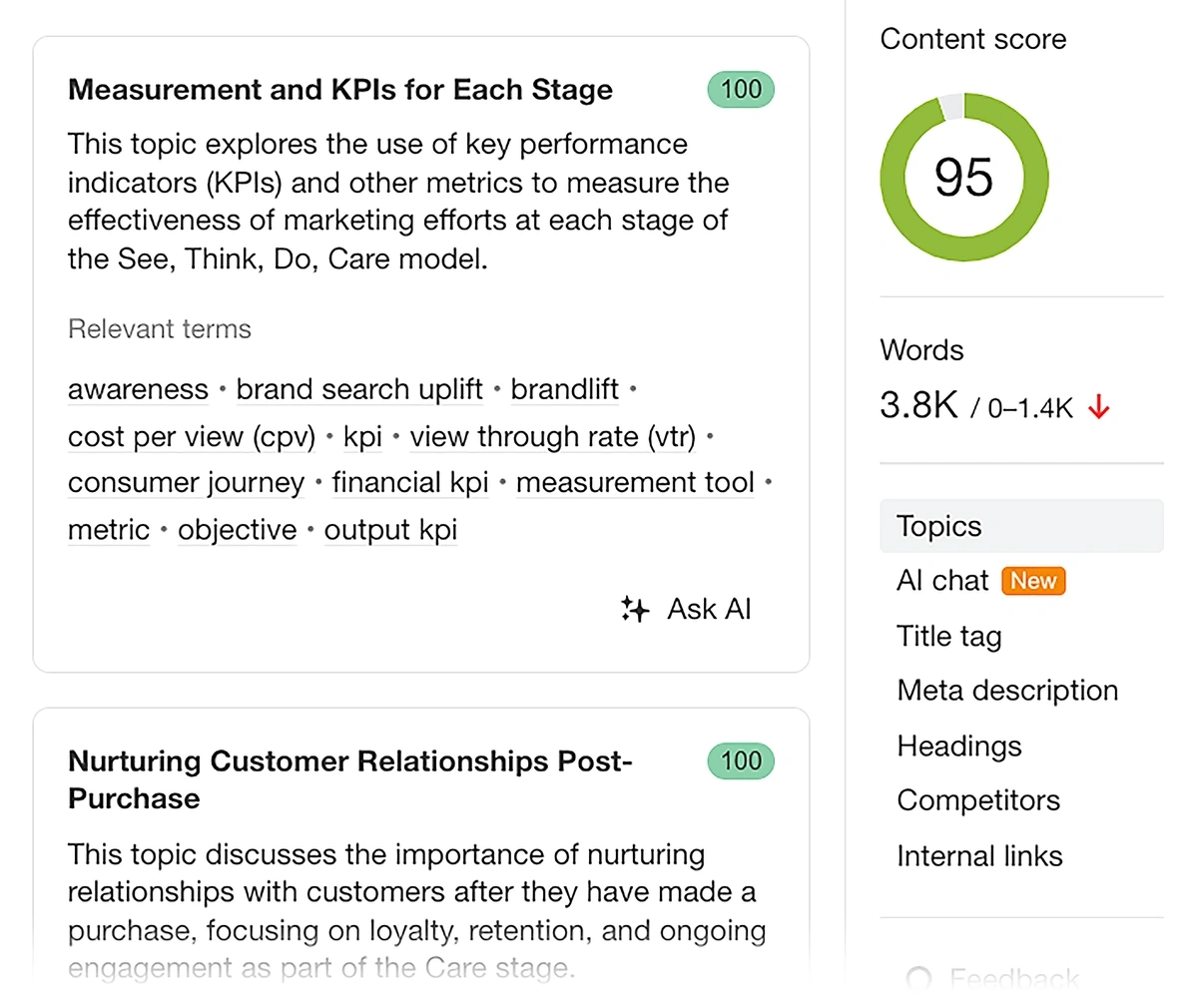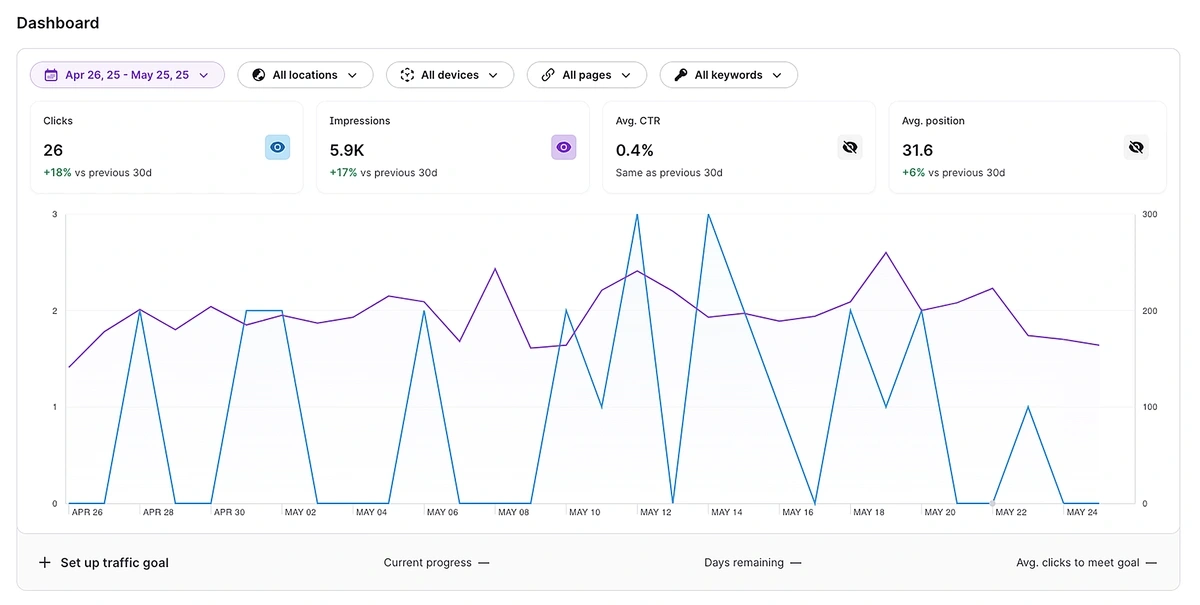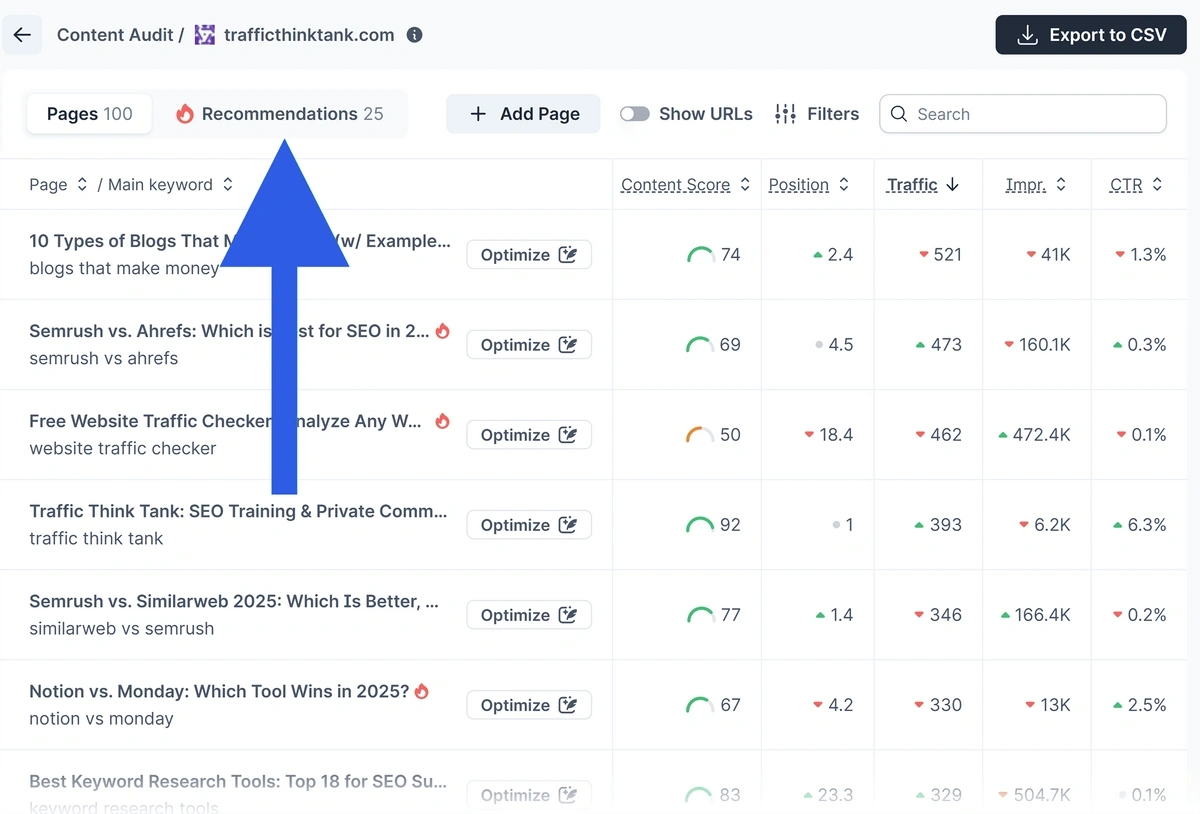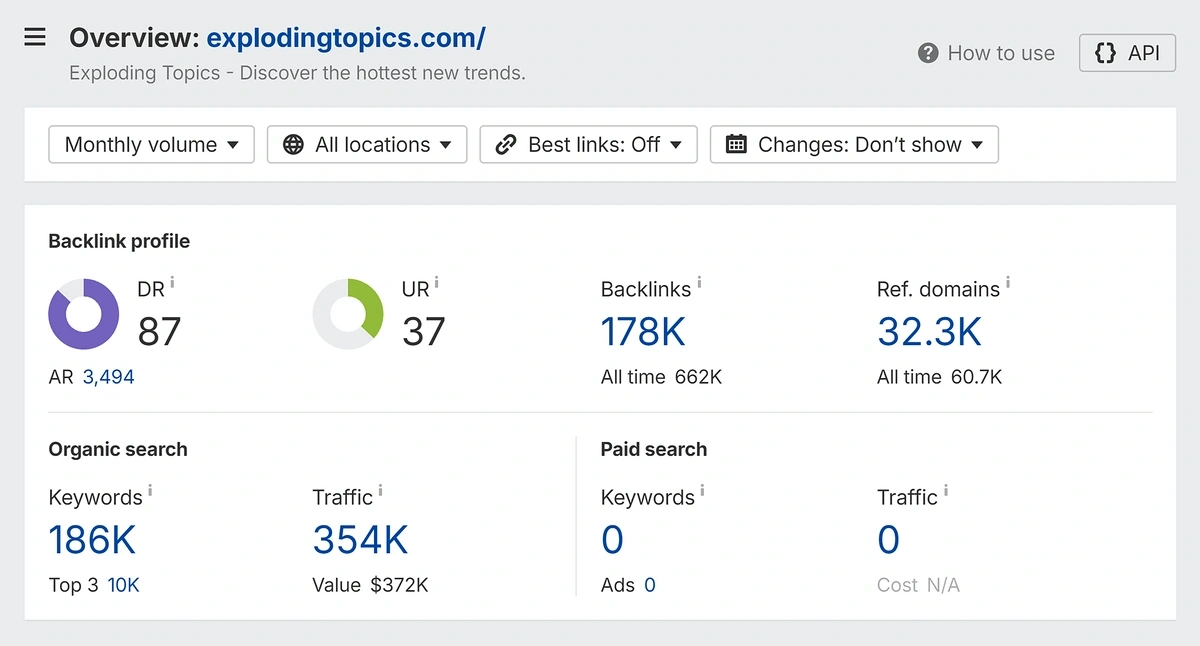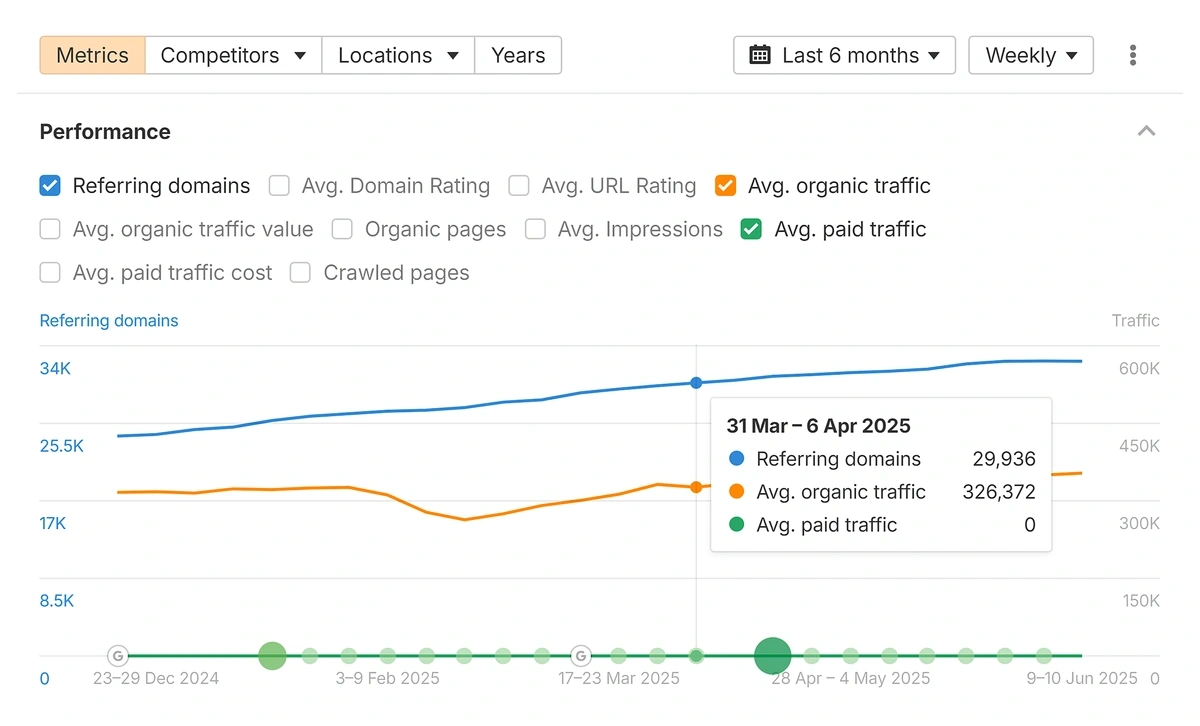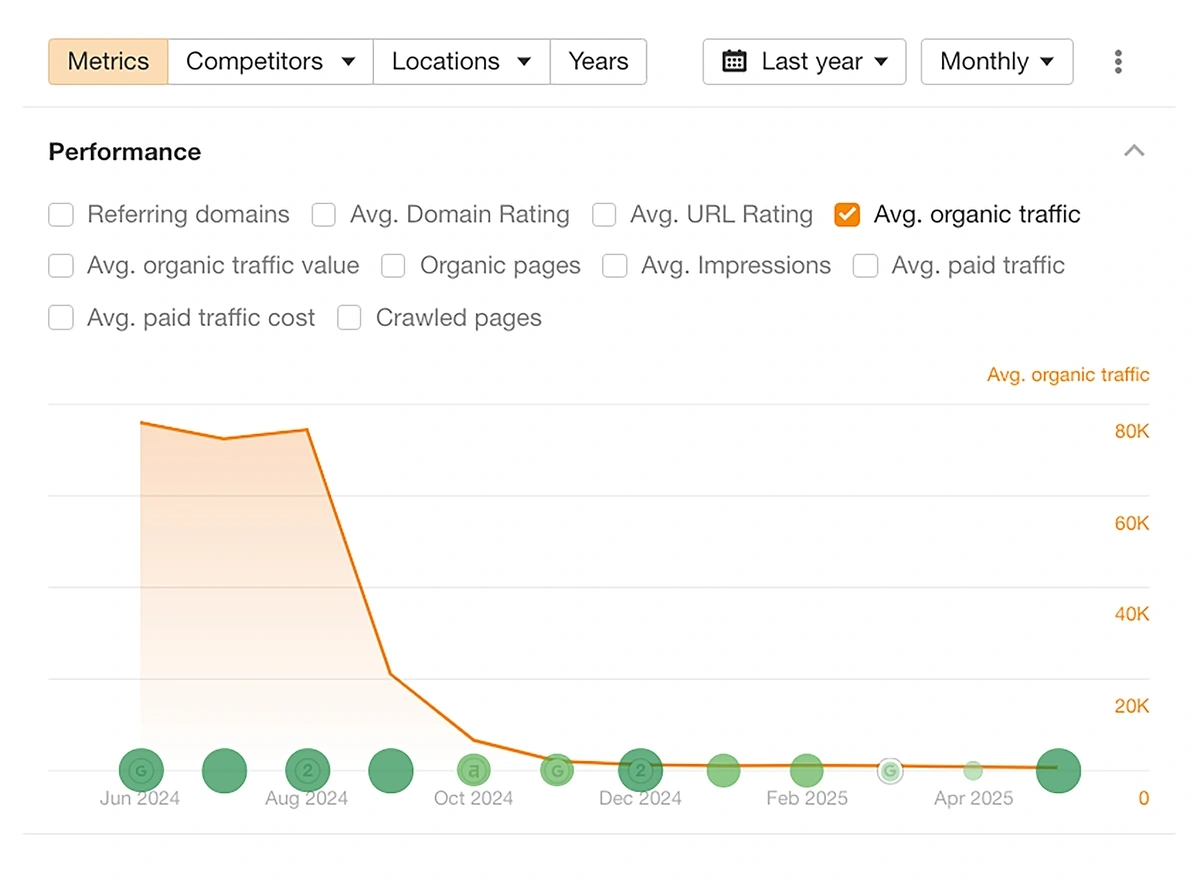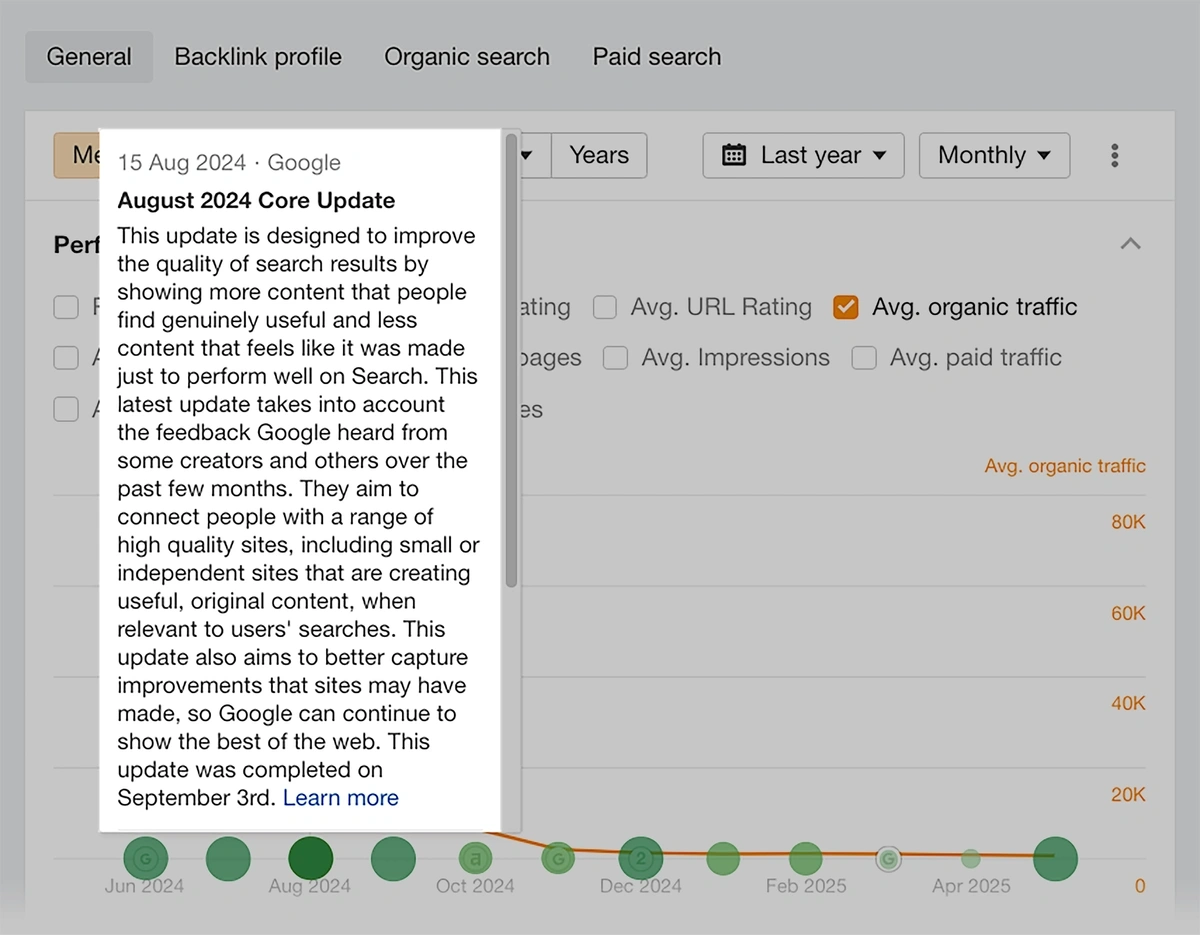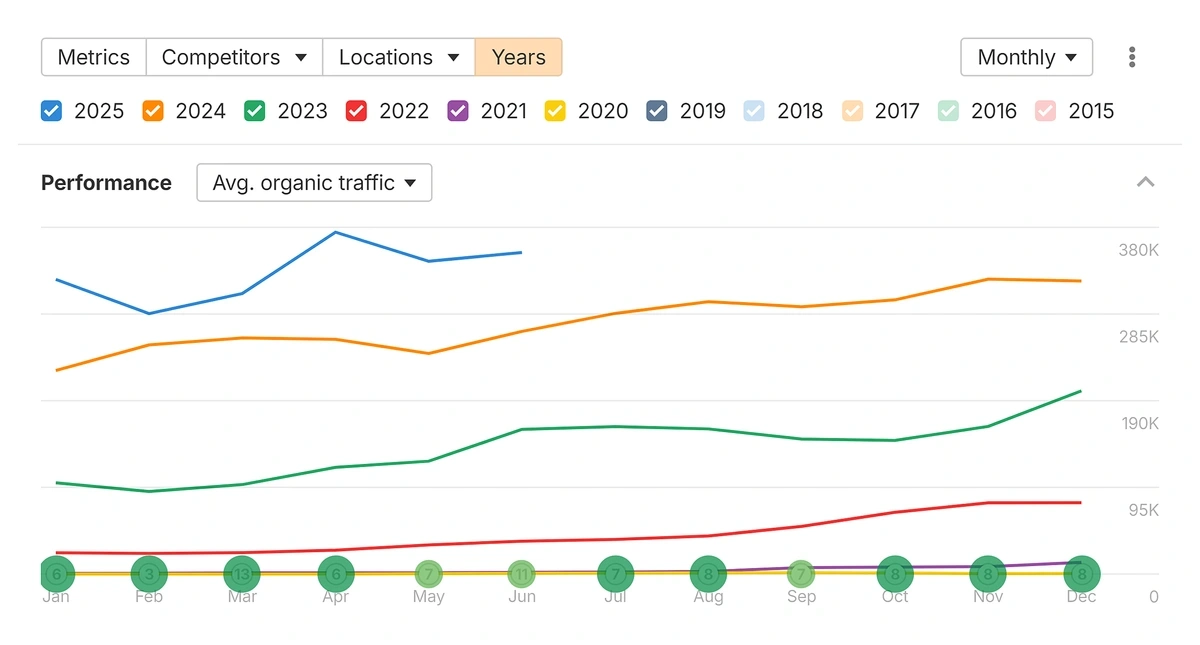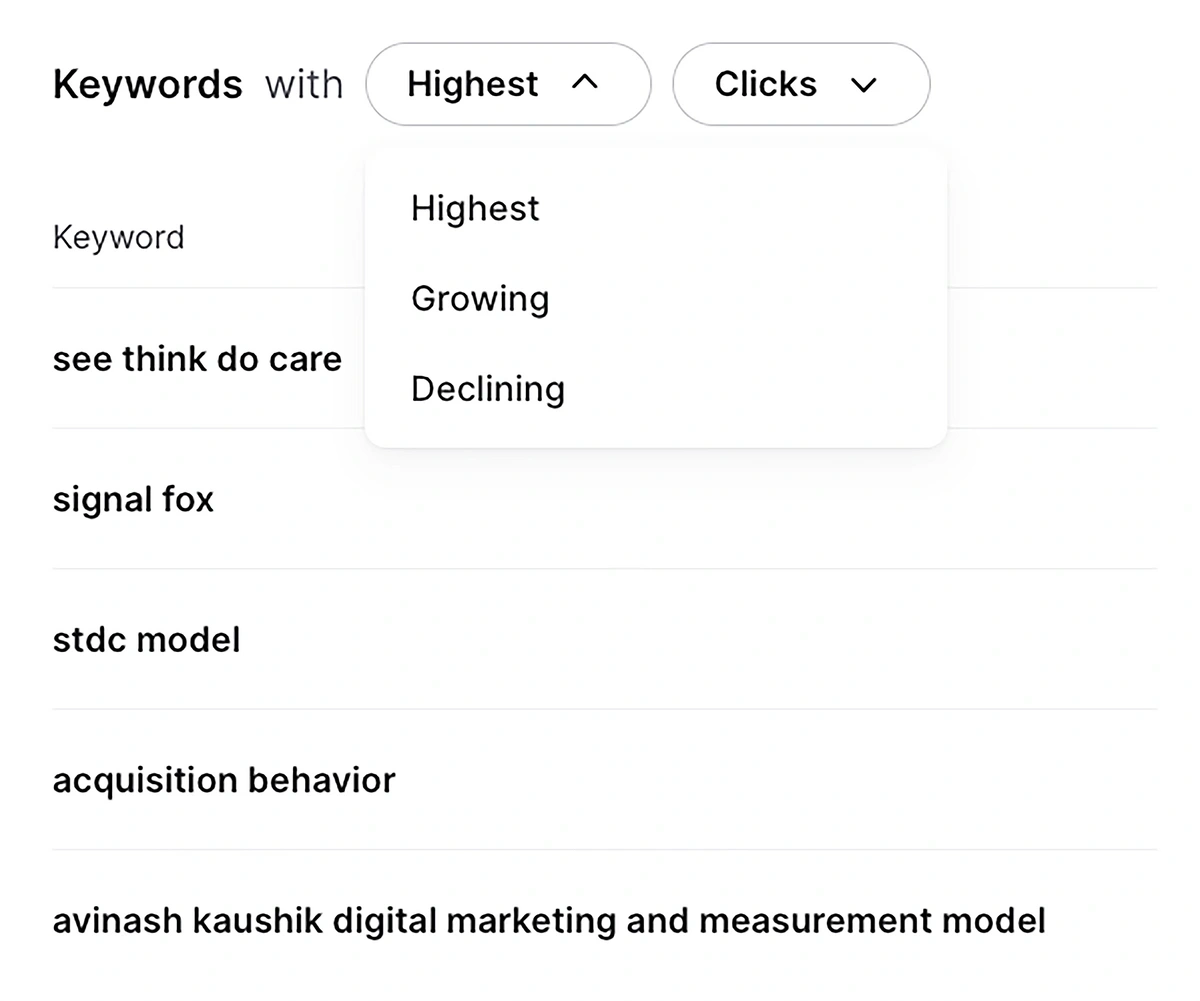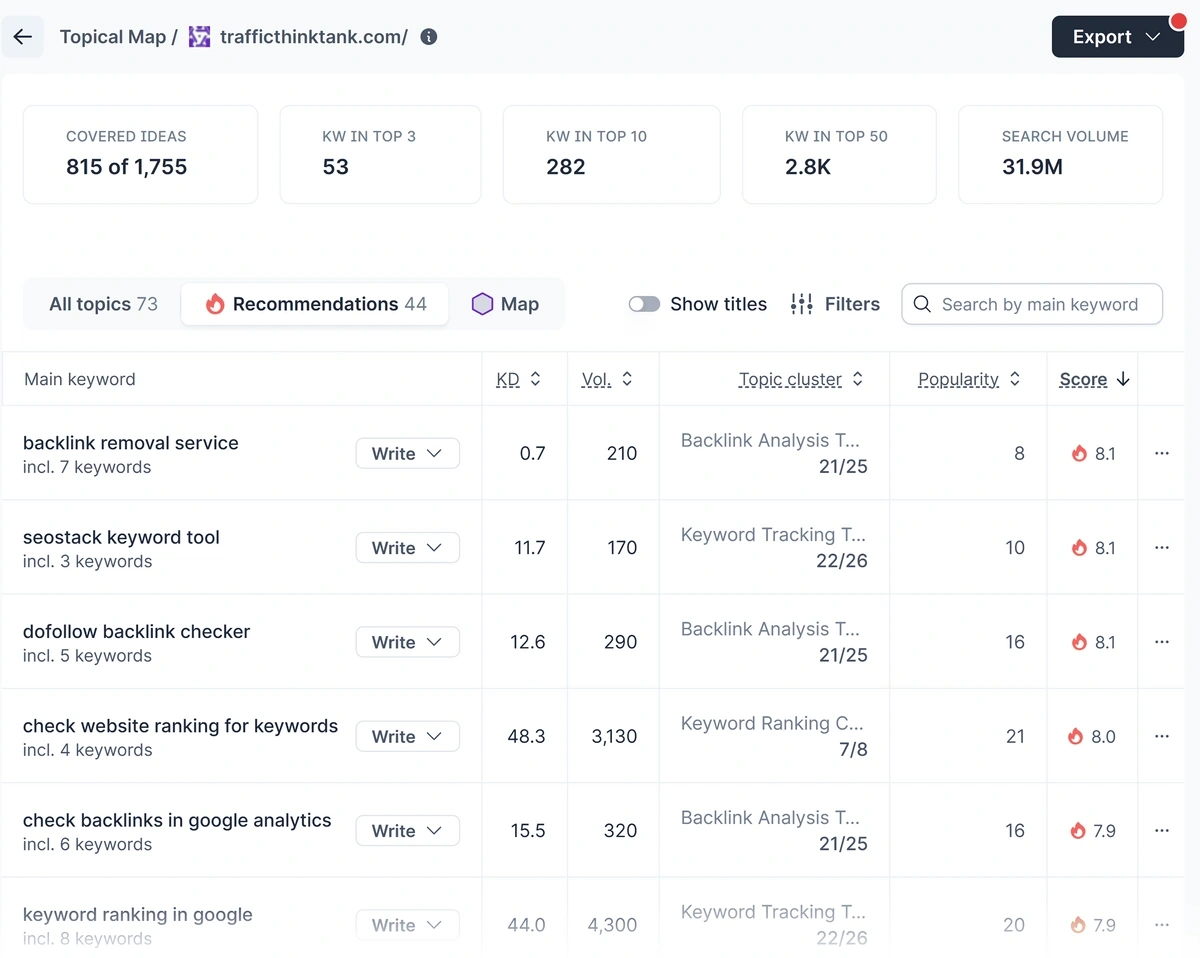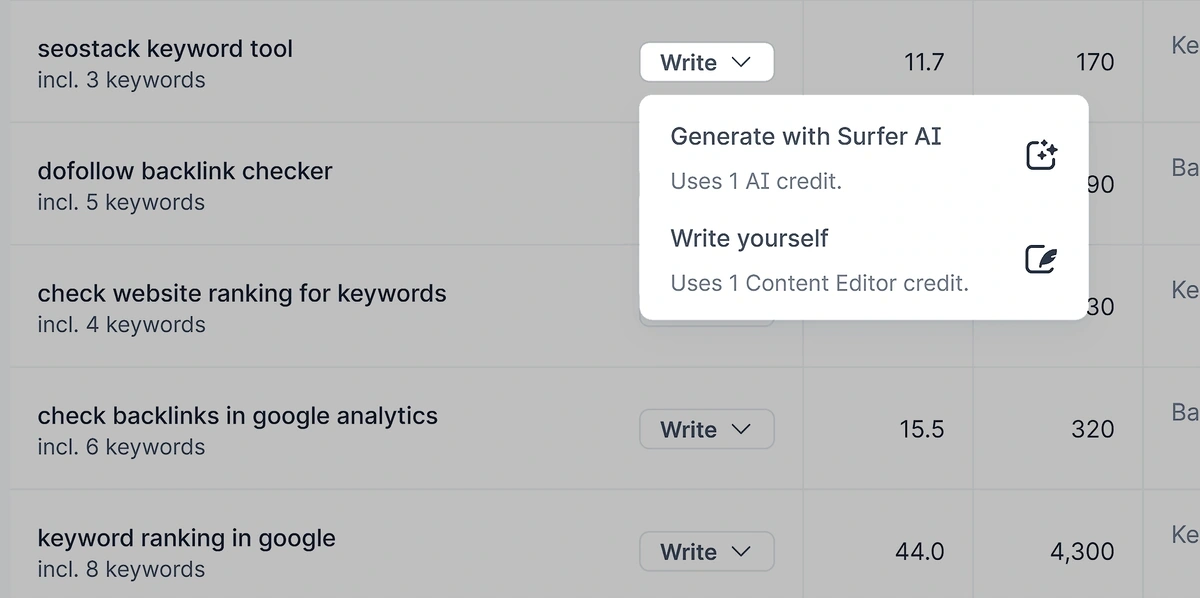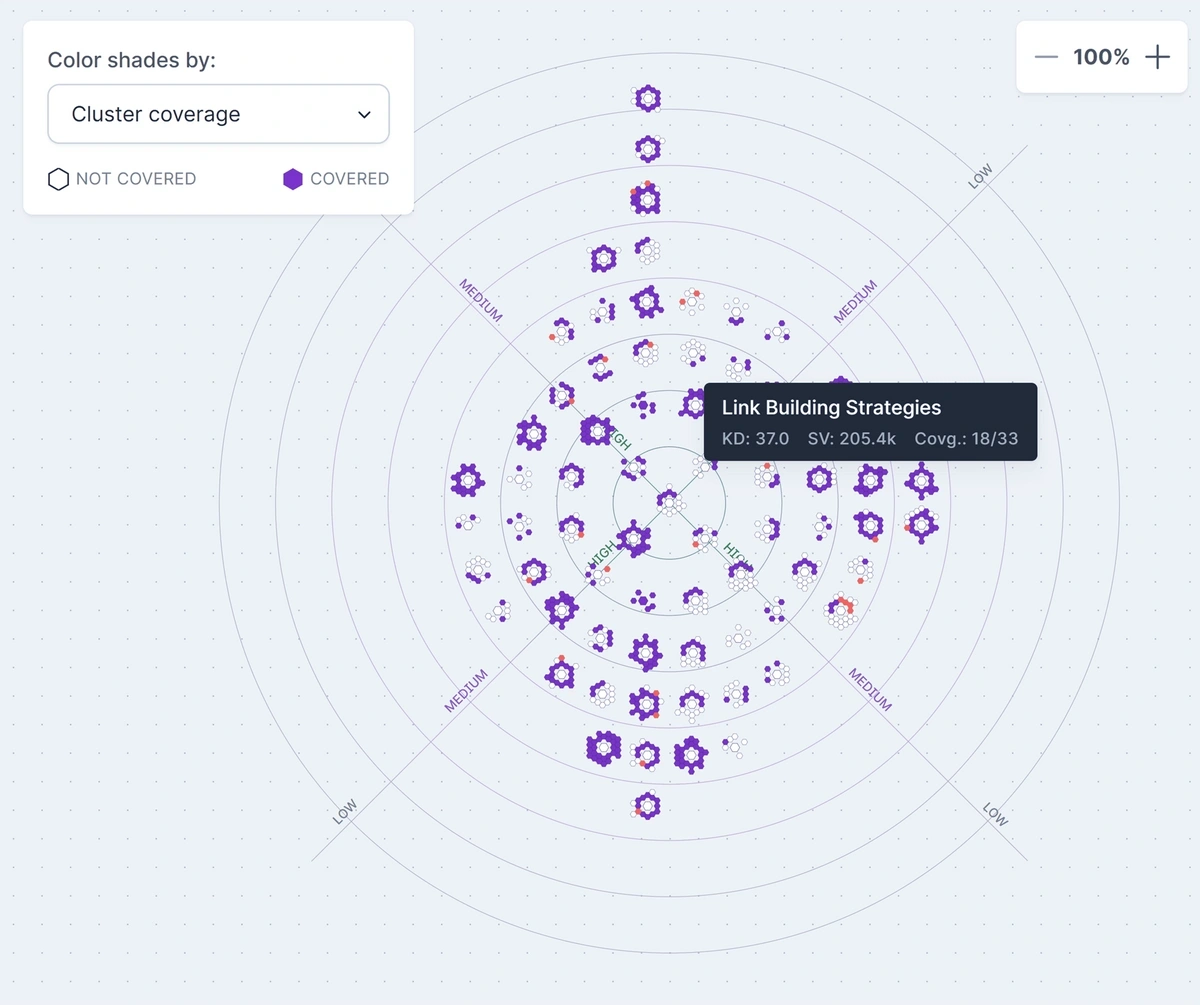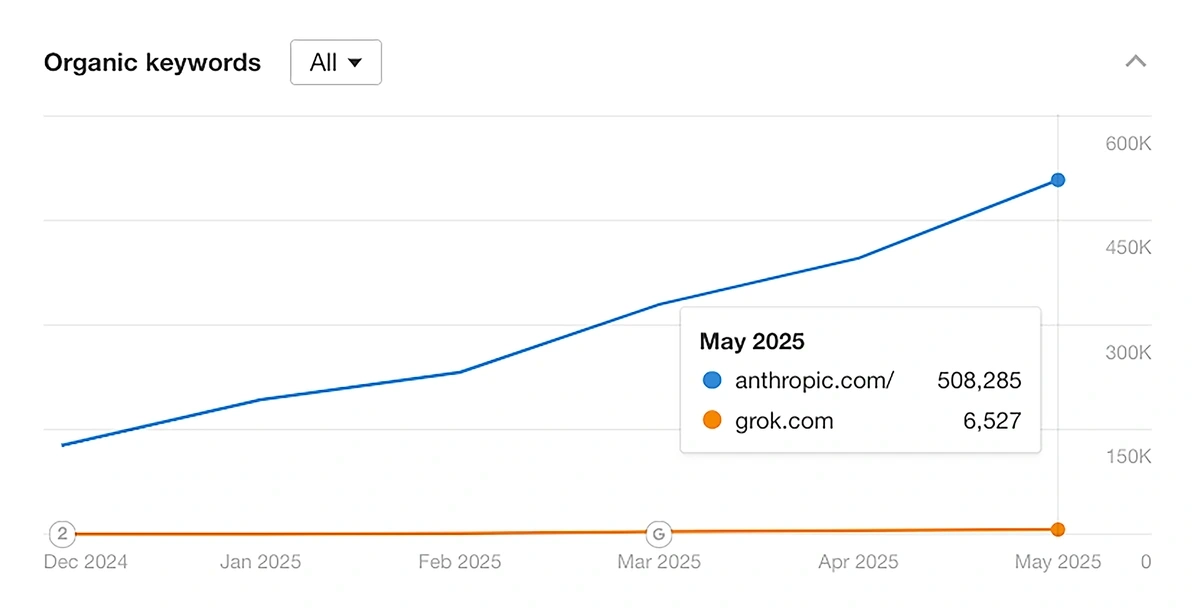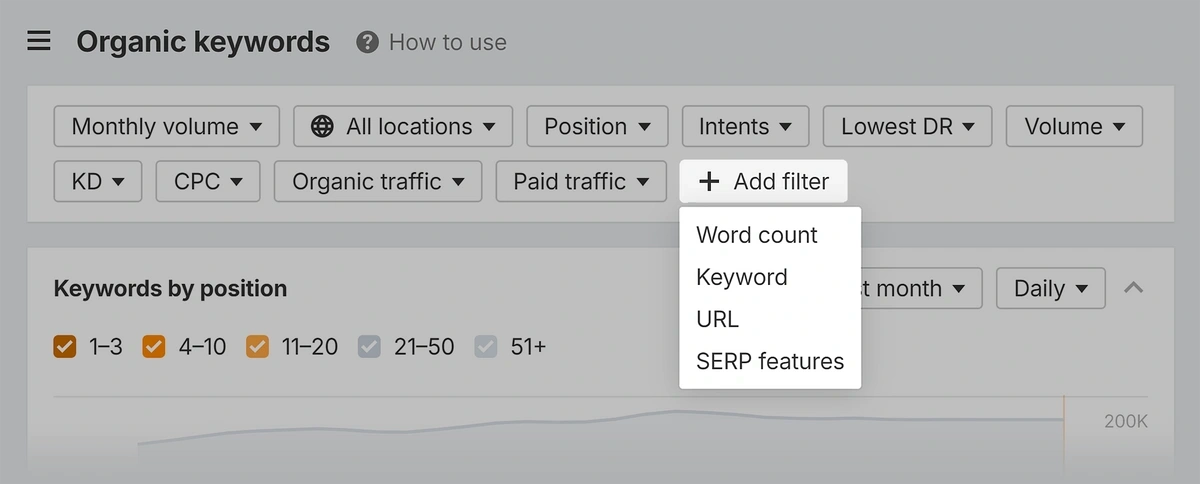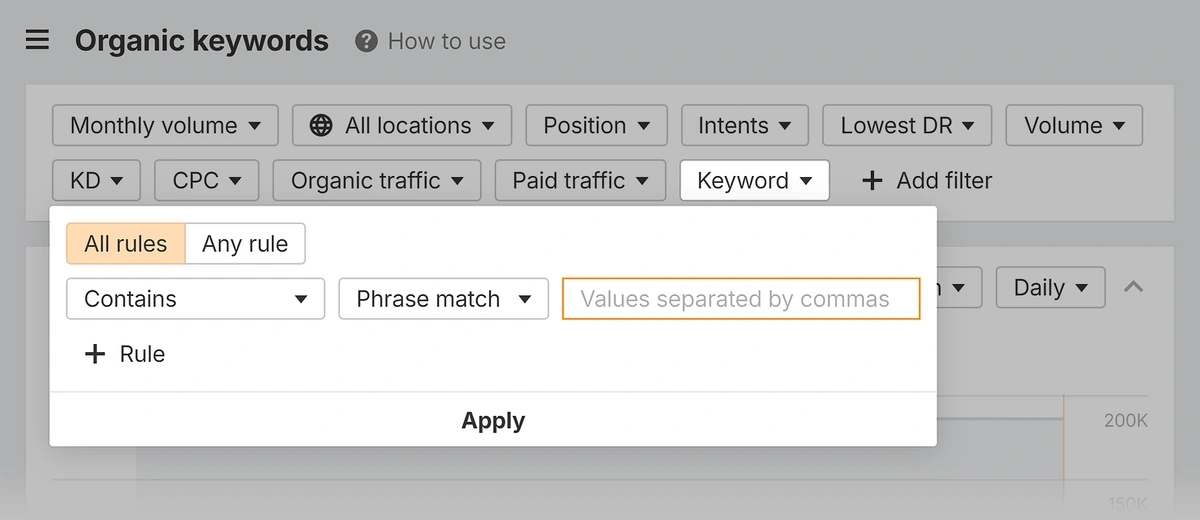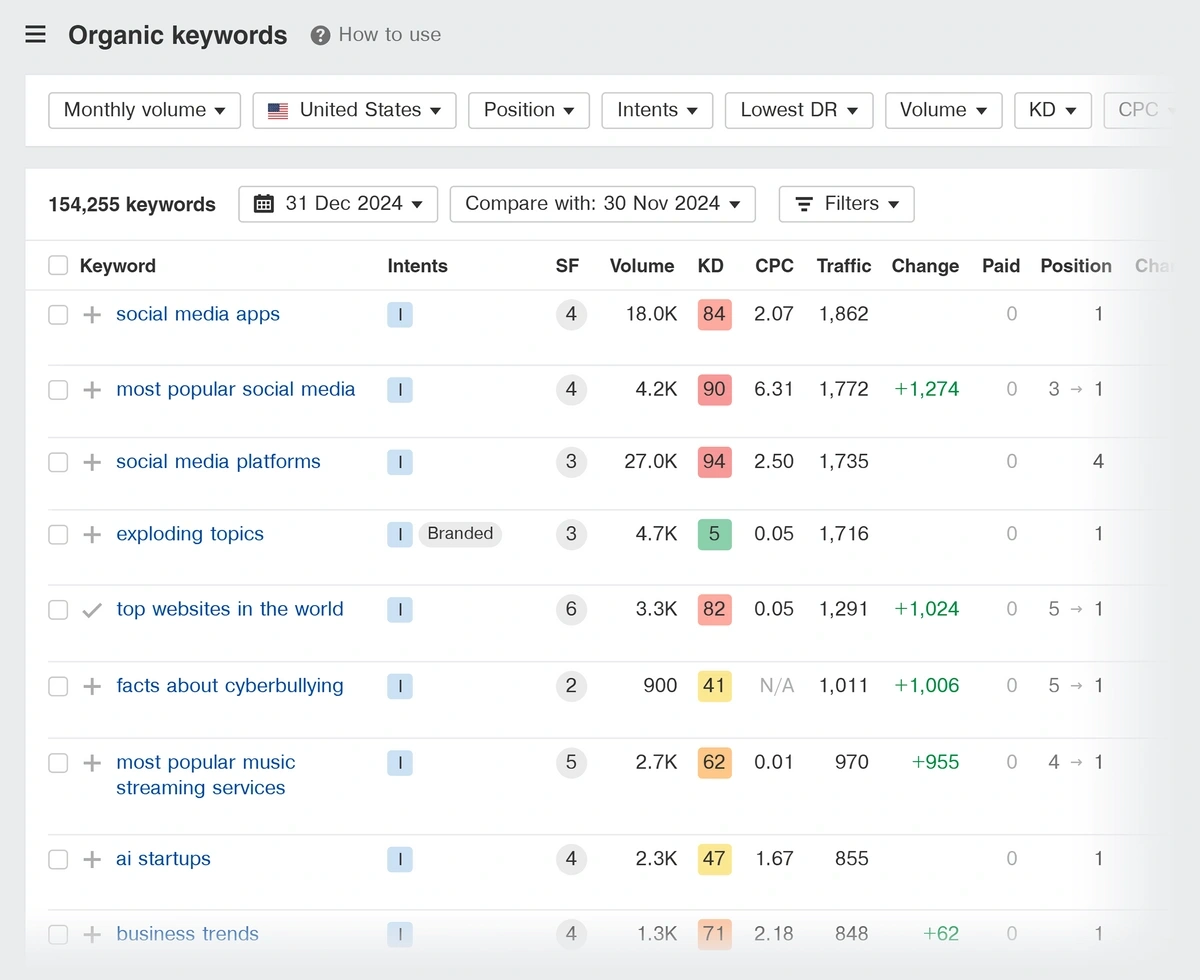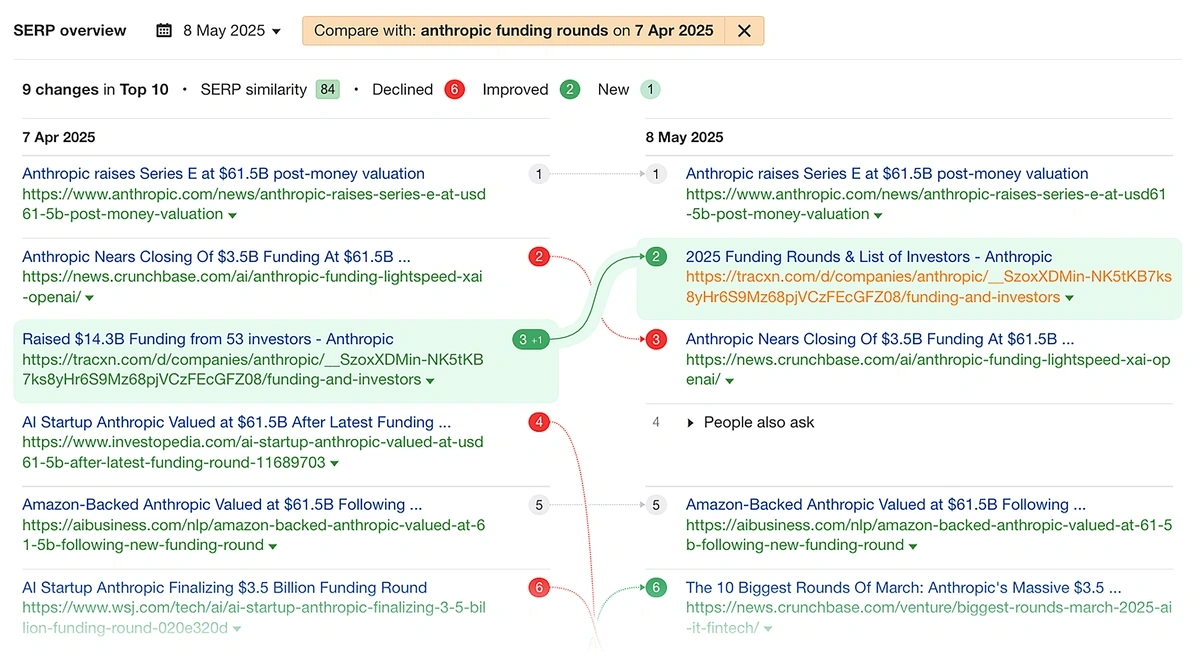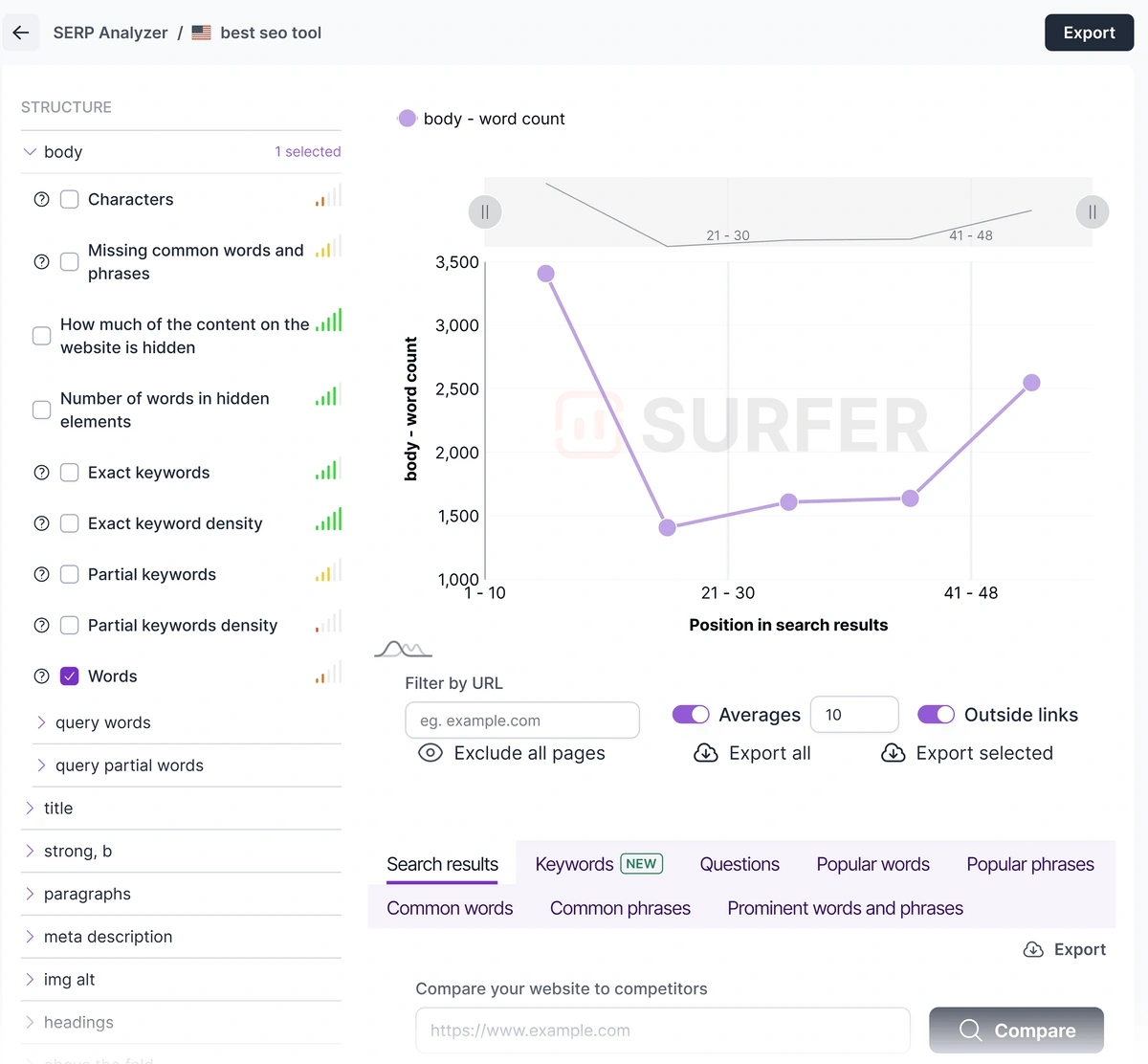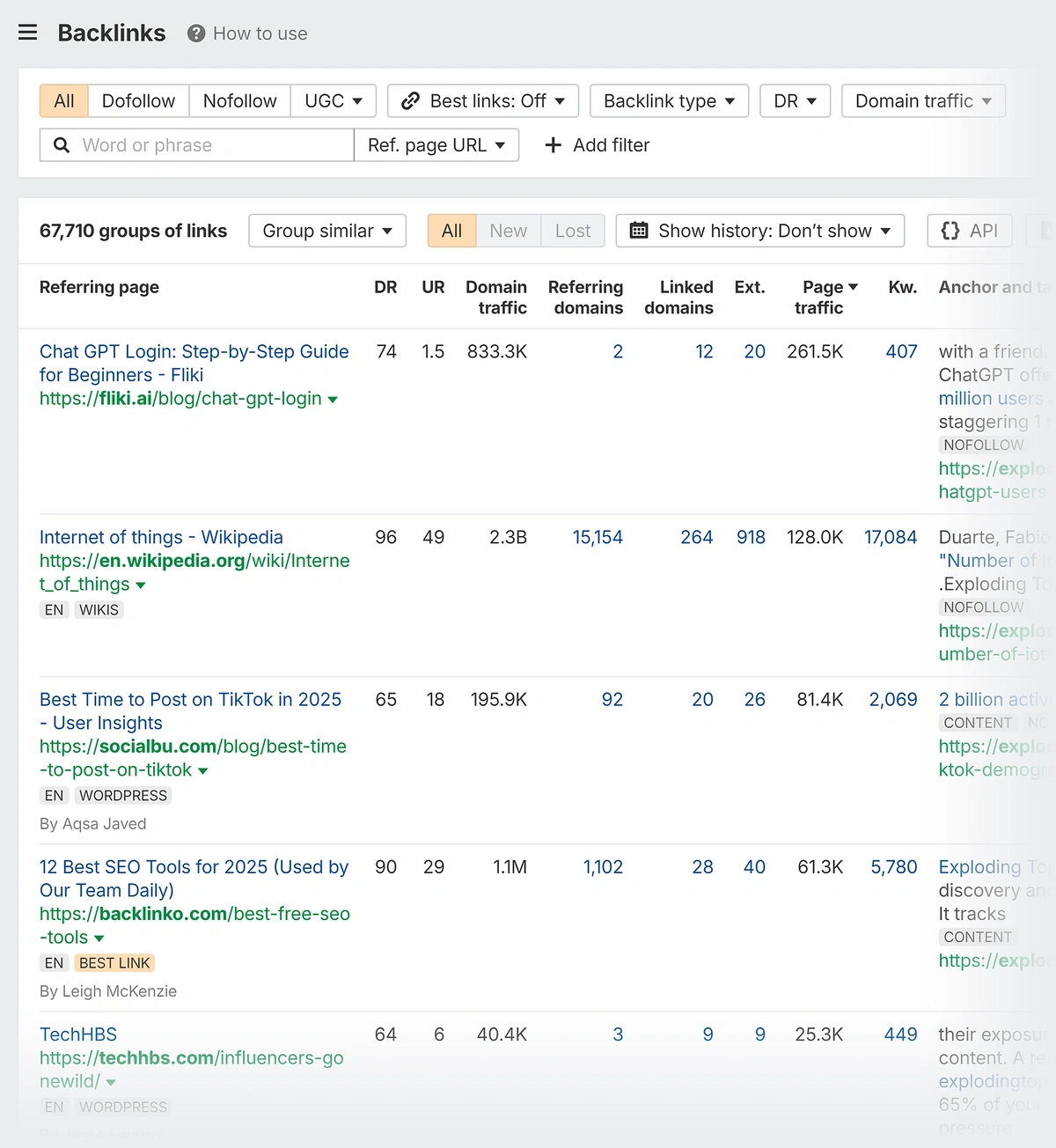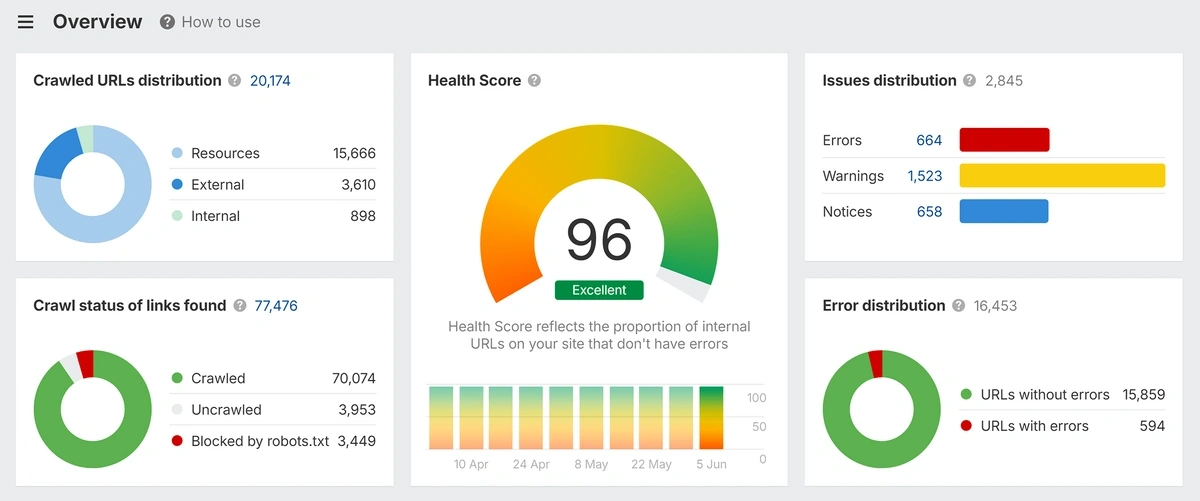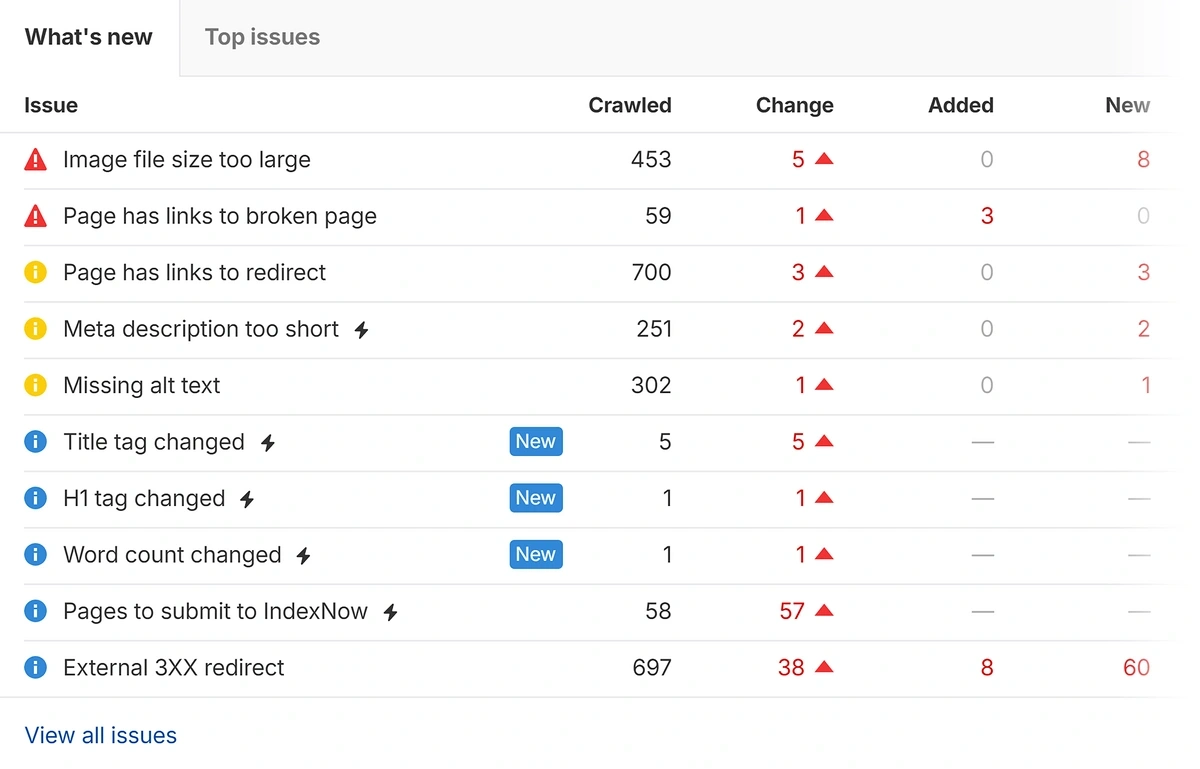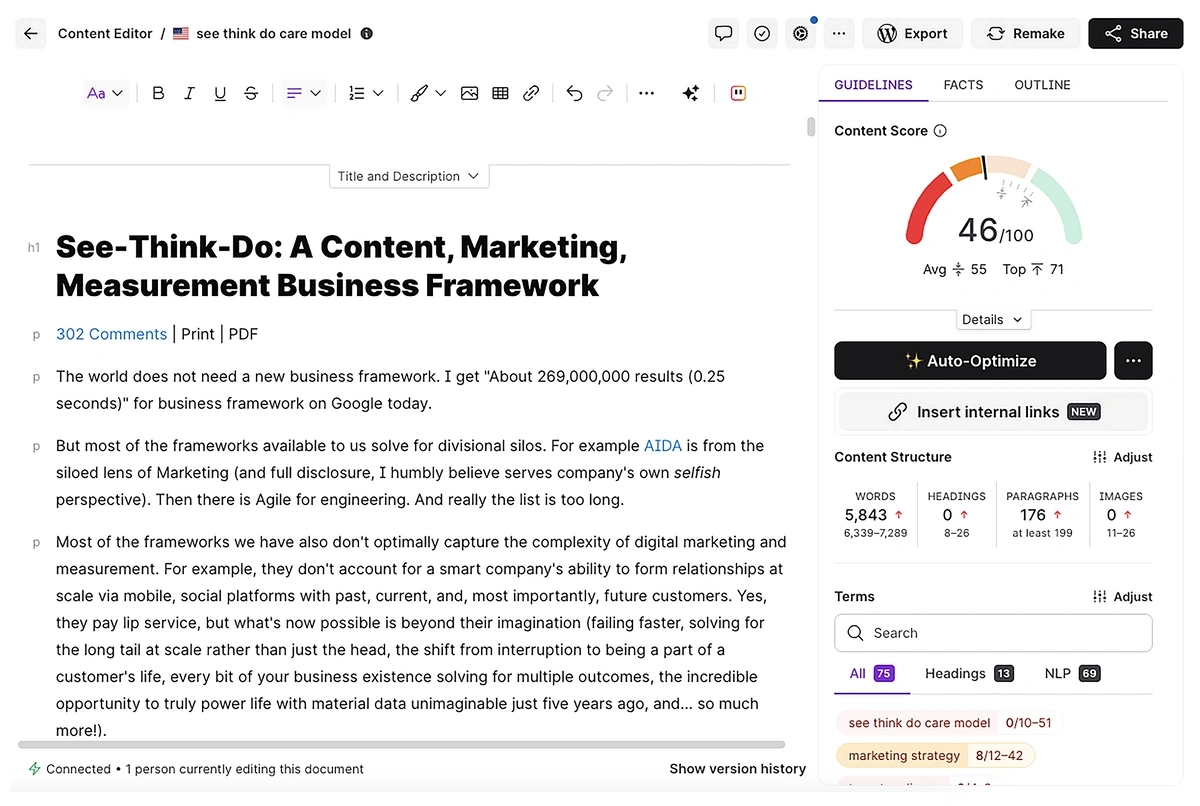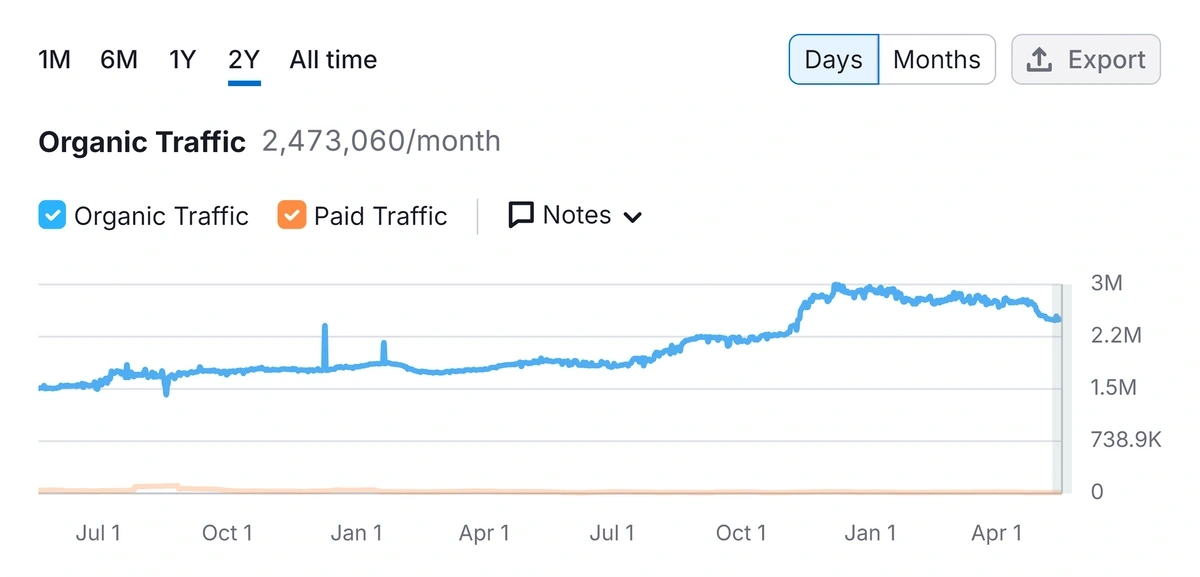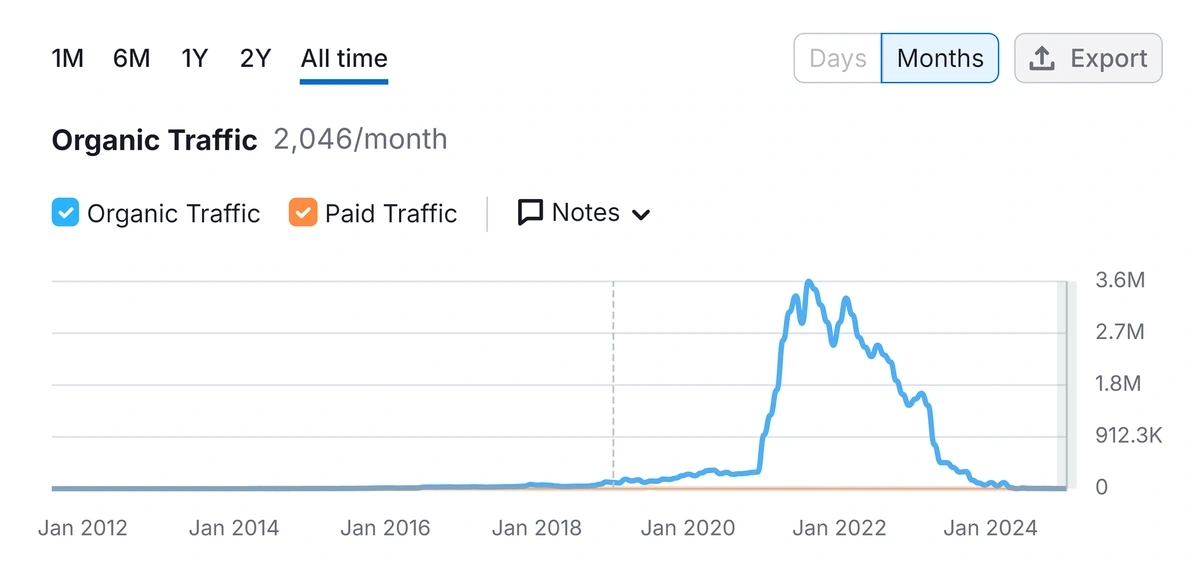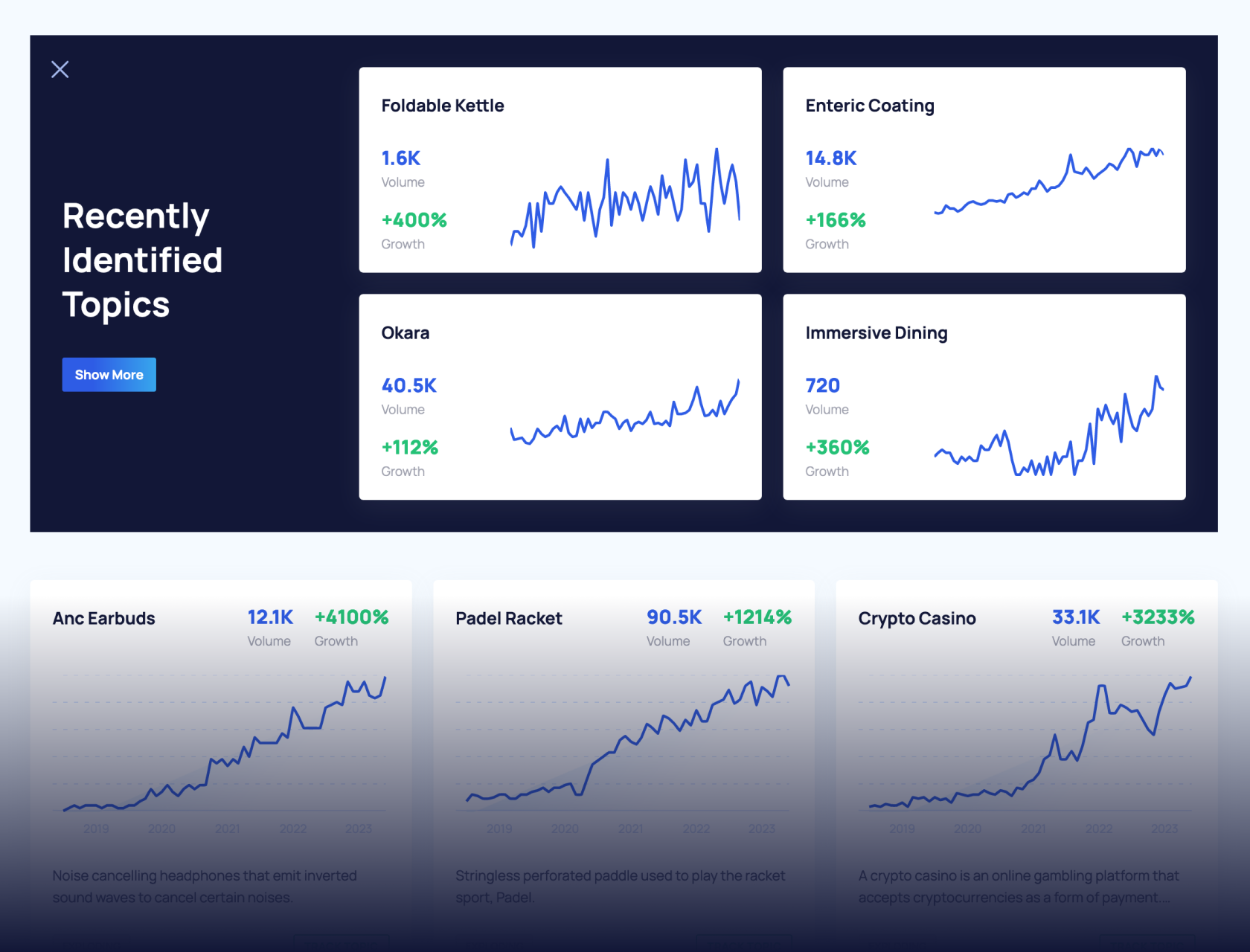
Surfer SEO vs Ahrefs: 2025 Review for Agencies
Google’s Helpful Content Update, and the follow-up algorithm changes, shook the SEO world.
The losers included many corporate sites. Despite having large content teams and the best tools, these sites saw steep traffic declines.
Some solopreneur sites, previously at the top of their SEO game, flatlined and went out of business.
Marketers and small business owners are asking me:
- Should we change the tools we’re using?
- Do we still need Ahrefs or Semrush?
- Time to go all in on AI-generated content?
In this article, I analyze what Ahrefs and Surfer SEO offer within the context of SEO changes and the rise of AI models.
Let’s start with a quick overview of each.
Surfer SEO vs. Ahrefs: The main difference between Surfer SEO and Ahrefs is that the latter is a comprehensive SEO platform for domain and competitor analysis. But it also includes an AI tool for content optimization. Surfer SEO is a content optimization platform that uses AI to generate and optimize individual articles.
| Feature | Surfer SEO | Ahrefs |
| Pricing | Starts at $99/mo | Starts at $129/mo |
| AI Content Optimization | ✔ | ✔ |
| Domain analysis | For sites you own | For any site |
| Keyword Research | Narrow | Comprehensive |
| Keyword gap tool | X | ✔ |
| SERP feature tracking | 7 | 19 |
| Backlinks Analysis | X | ✔ |
| Technical SEO audit | X | ✔ |
| Rank Tracker | Add-on | Included in all plans |
Ahrefs: SEO Research and Analysis
Ahrefs is as relevant as it always was, even with the dramatic changes we’re seeing in SEO.
In reviews, customers say they like its vast databases and world-class tools.
- Ahrefs and Semrush are the only 2 contenders for doing world-class, comprehensive SEO
- Both enable you to do keyword research, backlink analytics, advertising, and competitor research at scale
- You can analyze AI Overviews, a must-have in 2025
Fans of Ahrefs say it's “like having a complete data analyst agency at your disposal 24/7” (Elwin Pereira, SenS Online Solutions)
Detractors on G2 talk about “expensive” plans, “high costs”, and “pricing issues”.
Surfer SEO: Content Optimization
Surfer SEO is a content creation and optimization platform. Its design incentivizes adoption of AI-generated content, which is in the danger zone for SEO.
- Context: Surfer SEO competes with market leaders Clearscope and MarketMuse
- Unique: Unlike its competitors, Surfer can generate entire articles from AI. Its Auto-Optimize feature is used to edit passages.
- Overlap: There’s some overlap with Ahrefs in keyword research, but Surfer isn’t anywhere near the Ahrefs level.
Fans say things like: “We use it daily and can wholeheartedly recommend trying it.” – Bolt testimonial on SurferSEO.com
Detractors: I found a Reddit thread describing it as “astrology for SEOs.”
Build a winning strategy
Get a complete view of your competitors to anticipate trends and lead your market
Disadvantages of Content Optimization Platforms
I have 7 years of experience with content optimization platforms.
Like any tool, they can be used well or poorly.
Many incentivize poor practices – now referred to as “over-optimization” – which can harm your SEO.
Background: Over the past decade, SEO playbooks across companies became remarkably similar.
They shared a foundational premise that made them vulnerable to any major Google algorithm update: you can game Google and engineer high rankings by reducing SEO to a series of rigid rules.
Content optimization platforms rose concurrently with the proliferation of these playbooks:
| Content Optimization Platform | Date Launched |
| Clearscope | 2016 |
| Surfer SEO | 2017 |
| MarketMuse | 2018 |
- The platforms made executing the playbooks easier
- Playbooks then mandated use of the platforms
- The playbooks have failed, yet the content optimization platforms continue
Like dinosaurs fleeing an exploding volcano, many sites using these playbooks didn’t survive Google’s HCU (Helpful Content Update).
So, I like to ask:
- Are these optimization platforms suitable for post-HCU SEO?
- Are they still incentivizing poor SEO?
Let’s start with Surfer SEO.
Content Optimization: Surfer SEO vs. Ahrefs
How does Surfer SEO’s content optimization tool compare with Ahrefs’ new AI Content Helper?
And where do they both sit in the context of flawed content optimization platforms?
Surfer SEO’s Content Optimization
Surfer SEO, Clearscope, and MarketMuse share a common layout:
- There’s a large editing pane for article text
- A vertical sidebar contains a content score and list of “terms”
- The sidebar contains tabs with more data
After connecting your site’s Google Search Console account to Surfer SEO, you’ll get a list of recommendations for which articles to optimize.
Add a URL to pull article text into the content editor.
Here, my content score is 54/100.
In the sidebar, there’s a scrollable, recommended list of “terms” to add to my article.
Near the bottom of the list were irrelevant terms, like:
- Crystal clear
- Winning combo
- Buy stuff
I created a nonsensical paragraph of lorem ipsum text and peppered in some of these terms.
Doing so increased my content score by 10 points.
Then I highlighted the nonsensical paragraph and asked Surfer SEO’s AI to expand on it.
It generated several paragraphs. My score surged to 85.
Note: In “expanding” on my nonsensical paragraph, what Surfer SEO seemingly did was scan the rest of my article for basic points, rephrase them, and pepper in recommended terms.
This created redundancy but delivered a high score.
Ahrefs AI Content Helper: In contrast, using the same article and techniques, I was unable to budge the Ahrefs score by even 1 point. That’s good.
The only way I could improve my score in Ahrefs was to thoughtfully consider some AI-generated topic recommendations (presented in sentence form) and write new sections myself.
I didn’t find the “Relevant terms” useful. But the terms are de-emphasized in the layout. More importantly, adding them to an article doesn’t increase the content score.
Unlike Surfer SEO and Clearscope, the Ahrefs tool does not incentivize or encourage keyword stuffing.
I improved my score by selecting 3 additional topics to cover and writing the content myself. I ignored the terms.
My take:
- The Ahrefs tool uses AI thoughtfully and judiciously. As a result, recommendations and scores are more useful because they’re calibrated to quality rather than term-stuffing.
- Surfer SEO’s design incentivizes heavy reliance on AI-generated content, which cannot create original insights or EEAT; critical factors since HCU.
Bottom line: If you choose Surfer SEO, tread carefully when it comes to AI-generated content and the pursuit of high content scores. Ahrefs AI Content Helper is more useful and reliable. However, I prefer the Semrush SEO Writing Assistant to both: the tool doesn’t try to do too much, and I find that refreshing and helpful.
Domain Analysis
Domain analysis is often a first step when preparing for a prospective client meeting. Being able to obtain insights quickly is key.
Surfer SEO vs. Ahrefs: The main difference in domain analysis is that Ahrefs can be used to analyze any competitor domain, while Surfer SEO restricts analysis to sites you own.
Surfer SEO: Google Search Console Plus AI
Surfer SEO’s domain analysis tool analyzes your site’s content performance and makes recommendations for on-page improvements.
This makes sense given Surfer’s focus on page optimization.
It pulls data from Google Search Console (GSC) and adds AI insights.
This display includes annotations for Google algorithm updates, a common feature of software tools that pull GSC data.
Below this, you’ll see “Recommendations”. This is a prioritized list of existing articles to take action on.
The list pulls in the Surfer SEO content score. This is a score out of 100 based on “quality” and “relevance.”
The recommendations may be to write a new article (“Continue”) or to “Optimize” an existing one.
Ahrefs Domain Analysis
Add any URL to the Ahrefs Site Explorer and you’ll get a series of core metrics at top, including:
- DR (Domain Rating)
- Total backlinks
- Traffic data
You can filter search data by 200+ geographic locations and countries. Compare that to Surfer’s 100+ countries.
(Keep in mind that with Surfer, you’re restricted to analyzing sites that you own.)
Scroll down the Overview to find a series of helpful tiles, like the “Performance” tile.
The 10 tick boxes add specific metrics to the chart, like organic traffic value or paid traffic cost.
The UI is smooth and features crosshair tooltips.
In the example below, I analyzed a different domain. We see a steep drop in traffic following Google’s August 2024 Core Update.
Mousing over the green dots at the bottom reveals that the decline correlates with a major Google algorithm update.
Click on the “Years” box to select up to 10 years of history. Here we get insights from a different angle.
Bottom line: Ahrefs domain analysis makes it easy to obtain valuable insights.
Keyword Research Tools
When doing keyword research, agency marketers need to be able to analyze by many dimensions, including SERP features and search intent.
Surfer SEO: Limited Scope
Understandably, Surfer SEO focuses on keywords related to sites you own.
The options it provides suggest which keywords to target next.
Surfer offers far fewer keyword metrics and tools than Ahrefs. And it lacks a keyword gap tool.
Keyword analysis appears in the dashboard for your site
Here, Surfer pulls 5 keywords which you can sort by:
- Highest / Growing / Declining
- Clicks/ Impressions / CTR / Position
The Topical Map gives you generic ideas sorted by KD (keyword difficulty) or search volume.
For any of these content ideas, you can click a button and get an AI-generated article. Or write it yourself.
Surfer also provides an interactive Topical Map, displaying topic cluster keywords “covered” and “not covered” by your site.
How does Ahrefs compare?
With Ahrefs, I like to start my keyword research in Site Explorer.
Returning to the Performance tile, I can add a competitor and click the Organic Search tab to get a high-level overview.
Switching to the Organic Keywords tool, I have 10 filters available, plus the option to add a custom filter.
The “Add filter” options include SERP features.
Selecting “Keyword” here allows you to create custom filters.
Here’s a close-up of the results.
The table features 13 metrics, too many to display here.
SERP comparison mode: The last one, labeled SERP, triggers an overview of ranking changes for that keyword.
Mouseovers and arrows highlight changes for a single page.
I’ve touched on a few of the many ways you can do keyword research in Ahrefs.
Keep in mind that Surfer SEO offers a detailed SERP Analyzer, but it’s a $29 add-on, which, when combined with the lowest-level plan, puts you right at the cost of Ahrefs.
Surfer’s SERP Analyzer focuses on page metrics, some of which are no longer relevant, like keyword density.
Bottom line: Ahrefs provides the scope and detail needed for professional keyword research.
Get More Search Traffic
Use trending keywords to create content your audience craves.
Backlinks Analysis
Surfer SEO doesn’t offer backlinks analysis.
By contrast, Ahrefs provides thorough backlinks analysis, including backlink profiles and a backlink gap tool called “Link Intersect”.
The gap tool provides a filterable list of sites that link to your competitors, but not to you.
Backlink gap analysis is essential for agencies offering link-building and outreach services.
The Ahrefs backlink index contains some 495 billion pages, updated every 15-30 minutes.
Want to Beat Your Competition?
Find out who’s linking to them and build a better backlink strategy.
Site Audits
Site audits reveal technical issues, like uncrawlable pages, that can suppress rankings or deindex pages.
As previously mentioned, Surfer SEO pulls in data from your Google Search Console (GSC) account. But it doesn’t pull in any issues or errors reported there.
By contrast, the Ahrefs Site Audit generates an interactive visual overview with issues sorted by category.
Below the overview, you can view a sortable list of issues, by “What’s new” or “Top issues.”
Bottom line: Being able to access Google Search Console data from the Ahrefs dashboard is a convenience factor.
Rank Tracking
While Ahrefs offers rank tracking on all plans, Surfer SEO’s Rank Tracker is an add-on and limited to 200 keywords.
Another key difference: SERP features.
- Surfer SEO tracks only 7 SERP features, and those do not include AI Overviews.
- In contrast, the Ahrefs Rank Tracker can be filtered by 12 SERP features. (See below.)
(Other Ahrefs tools include up to 19 SERP features.)
Filtering by SERP features is crucial: many of them are related to e-commerce. And optimizing for AI Overviews is table stakes for emerging GEO (Generative Engine Optimization).
Semrush tracks 44 SERP features, the most of any SEO tool. We've got a full Surfer SEO vs Semrush comparison which you can check out for more details.
Surfer SEO vs. Ahrefs Summary
On every factor analyzed in this article, Ahrefs outpaces Surfer SEO.
Yet, Surfer SEO provides many content optimization details missing from Ahrefs. And Surfer’s UI is superb.
But, do you need a standalone content optimization platform?
I’m skeptical of the value of standalone content optimization platforms. Content scores on these platforms don’t necessarily correlate with quality or ranking potential.
Worse, I’ve seen clients and content teams prioritize maximum scores, which can ruin SEO.
Try adding the text of a top-ranking article to one of these tools. It’s not uncommon for content optimization tools to give top-ranking content a failing grade.
For instance, this article, by marketing legend Avinash Kaushik, holds the #2 position for its keyword. Surfer SEO gave it a failing grade.
But the problems aren’t just related to content scores.
Consider:
- Recommending (and rewarding) verbatim inclusion of “terms” misses the fact that Google has long recognized synonyms.
- Recommended terms and outlines pulled into the tools from ranking content, fixate users on creating copycat articles, rather than adding unique value to the first page of Google.
That said, some users featured on the Surfer SEO site, like Bolt.eu, have experienced consistent traffic growth, as I verified in Semrush.
In contrast, another business featured on Surfer shows a steep rise to over 2 million visits/month, followed by rapid decline.
While many other factors may be influencing those sites’ results, we can still derive some conclusions.
Takeaways:
- Tools are only as good as your use of them.
- Content optimization tools have a unique potential for misuse, which can result in Google penalties.
Next Steps
Agencies are better off choosing a comprehensive tool like Ahrefs that includes carefully calibrated AI optimization features.
To navigate the radical SEO changes underway, we need a questioning mindset and world-class data tools.
Those interested in Ahrefs will benefit from comparing it to Semrush, which offers agency tools and built-in content optimization.
- Read our comparison of Ahrefs vs. Semrush.
- Contact Ahrefs to request a free trial.
- Start a 14-day free Semrush trial.
- You can also compare Ahrefs to other platforms like SpyFu.
Ready to choose the right SEO tool for your agency? Start a free trial with Ahrefs or Semrush today and experience the difference first-hand.
Stop Guessing, Start Growing 🚀
Use real-time topic data to create content that resonates and brings results.
Exploding Topics is owned by Semrush. Our mission is to provide accurate data and expert insights on emerging trends. Unless otherwise noted, this page’s content was written by either an employee or a paid contractor of Semrush Inc.
Share
Newsletter Signup
By clicking “Subscribe” you agree to Semrush Privacy Policy and consent to Semrush using your contact data for newsletter purposes
Written By


Sherrie Gossett has a knack for uncovering hidden trends and opportunities that others overlook, drawing on her extensive experien... Read more

